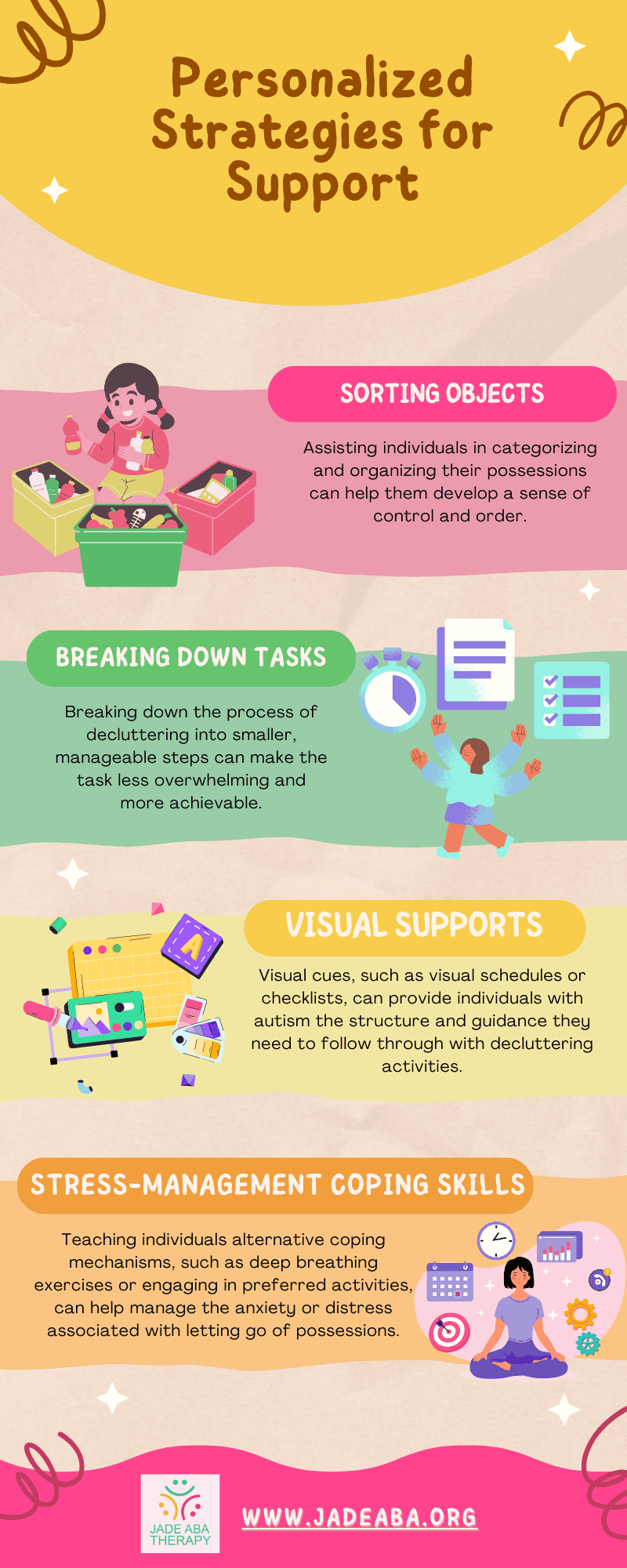Many autistic children engage in hoarding behaviors as a way to find comfort and stability in their often chaotic sensory environment. Hoarding behaviors can offer relief from anxiety and allow children to arrange their belongings in specific ways that bring them a sense of control and predictability.
Research suggests that approximately 25% of autistic children with co-occurring anxiety disorders exhibit clinically significant hoarding behavior, which is much higher than the prevalence in the general population.
This highlights the significant impact of anxiety on hoarding tendencies in autistic children.

Causes of Hoarding in Autism
Hoarding in autistic children can be attributed to challenges with executive functioning, which refers to the cognitive processes involved in planning, organizing, and completing tasks. Difficulties in these areas make it challenging for autistic children to let go of objects or organize their belongings in a conventional manner.
Therefore, hoarding becomes a way for them to cope with these executive functioning difficulties.
Moreover, sensory sensitivities in autistic children can contribute to the development of hoarding behaviors. Autistic children may find comfort in certain items or collect objects in response to specific sensory needs.
For example, a child may hoard soft objects to seek tactile comfort or collect items with specific visual patterns that provide visual stimulation.
Impact of Hoarding on Autistic Individuals
Hoarding behaviors in individuals with autism can have a significant impact on their overall well-being. Understanding the mental health effects and quality of life implications is crucial in addressing and providing support for individuals who engage in hoarding behaviors.
Mental Health Effects
Hoarding behaviors in autistic individuals can have negative effects on their mental health. These behaviors may lead to increased levels of stress, anxiety, and obsessive thoughts.
The accumulation of objects and the difficulty in discarding them can create a sense of overwhelm and contribute to feelings of being overwhelmed or out of control.
Furthermore, hoarding behaviors can impact an individual’s self-esteem. They may feel embarrassed or ashamed about their hoarding tendencies, especially if they are aware that it is not considered typical behavior. This can lead to social isolation and difficulties in forming and maintaining relationships.
Quality of Life Implications
The impact of hoarding on the quality of life of individuals with autism should not be underestimated. Hoarding behaviors can interfere with daily functioning and can make it challenging to navigate living spaces.
The excessive clutter can create safety hazards, such as tripping or falling, and may impede access to essential areas of the home.
Moreover, hoarding behaviors can impede an individual’s ability to engage in activities of daily living. The time and energy spent on managing and organizing the accumulated items can detract from other important tasks and responsibilities.
This can lead to a decreased overall quality of life and hinder the individual’s ability to participate fully in social, educational, and vocational opportunities.

How to Address Hoarding Behavior Among Autistic Individuals
When it comes to addressing hoarding behaviors in individuals with autism, it’s essential to implement effective strategies that can help improve their well-being and overall quality of life.
Two key approaches have shown promise in addressing hoarding in autism. These are as follows:
Cognitive-Behavioral Therapy
Cognitive-behavioral therapy (CBT) has proven to be particularly helpful in addressing hoarding behaviors in individuals with autism. This therapeutic approach aims to identify and modify unhelpful thought patterns and habits while building motivation for change.
Through CBT, individuals with autism can develop decision-making and organizational skills that are crucial in managing hoarding behaviors. Therapists work with individuals to explore the reasons behind the hoarding behavior and develop strategies to address them.
This may involve breaking down tasks into manageable steps, using visual supports, and providing rewards and incentives for progress.
CBT also focuses on stress management and coping skills. By identifying and addressing the underlying emotions and triggers that contribute to hoarding behaviors, individuals with autism can learn alternative ways to manage and reduce their anxiety.
Personalized Strategies for Support
Addressing hoarding in autism requires personalized strategies that consider the unique needs and reasons behind the hoarding behavior. It’s crucial to work closely with individuals with autism and their caregivers to develop a tailored approach.
Some strategies that may be helpful include the following:

By combining cognitive-behavioral therapy with personalized strategies, individuals with autism can receive the support they need to address hoarding behaviors.
That said, it’s important to approach hoarding with empathy, understanding, and patience, recognizing that each individual’s journey toward change may differ.